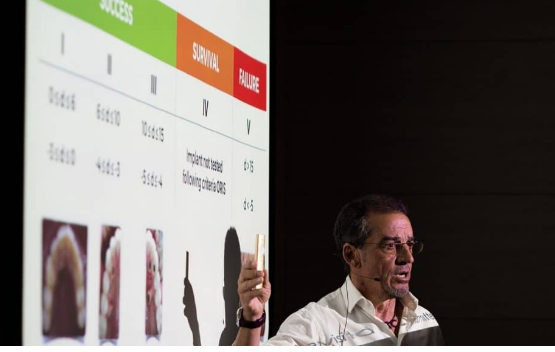There are several academic research papers available online, discussing the Success Rate of Zygomatic Implants and their complications. However, if you are a patient seeking to get zygomatic implants, the medical terminology in the papers might make it slightly harder for you to understand the case studies and make an informed decision.
This article will try to break down the case studies and explain in everyday language the complications that have arisen in real-life patients who got zygomatic implants. This will help you analyze whether zygomatic implants are the right solution for you or not.
Sinusitis
One of the main complications with zygomatic implants is sinusitis. Zygomatic plants are implanted into the cheekbone and are implanted through the sinus or extra-sinus area. Research has found that implants that are inserted through the extra-sinus area face fewer complications. Chronic SInusitis has been reported in patients who got the treatment through the sinus area. The success rate of the implants is still quite high. However, it is important that you consult your dentist thoroughly to find out what kind of surgical procedure would work best for you.
Smoking after zygomatic implants
Research suggests that smoking after any kind of dental procedure is not recommended as it can tamper with the healing process and also reverse the effects of the procedure in some cases. However, case studies specific to zygomatic implants and smokers suggests that the success rate of zygomatic implants in smokers is higher than that in traditional dental implants. Since Traditional dental implants are closer to the buccal cavity, i.e, the mouth, there is a higher chance of them being lost due to smoking. However, excessive smoking can lead to sinus issues. This can exacerbate the zygomatic implants and results in chronic sinusitis and even more severe infection. It can also cause gum diseases, thus tampering with the lifeline of the implant.
Loss of Fixation
As a late complication, it has been observed in research that there could be a loss of fixation in the xygomaitc implants. While it is difficult to understand in medical terms, in simpler terms, the implant has some contact area with the bone. The amount and level of this contact depends upon the technique used to install the implant. Ensure that you discuss this at length with your dentist to find out exactly what technique and procedure would be required for your personal case. High contact with bone could lead the implant to lose fixation and it could either result in more severe complications.
However, this is an issue that has been observed in traditional implants as well.
Is the success rate of Zygomatic Implants higher than that of traditional implants?
Research suggests that there is not much difference between the success rate of zygomatic implants and traditional implants. They both have their own respective set of benefits and complications. There are multiple factors that determine if a particular case of zygomatic implants would be successful or not. This includes things like overall oral health, whether a patient smokes or not, who is performing the surgery and how efficiently are they performing it.






Comments